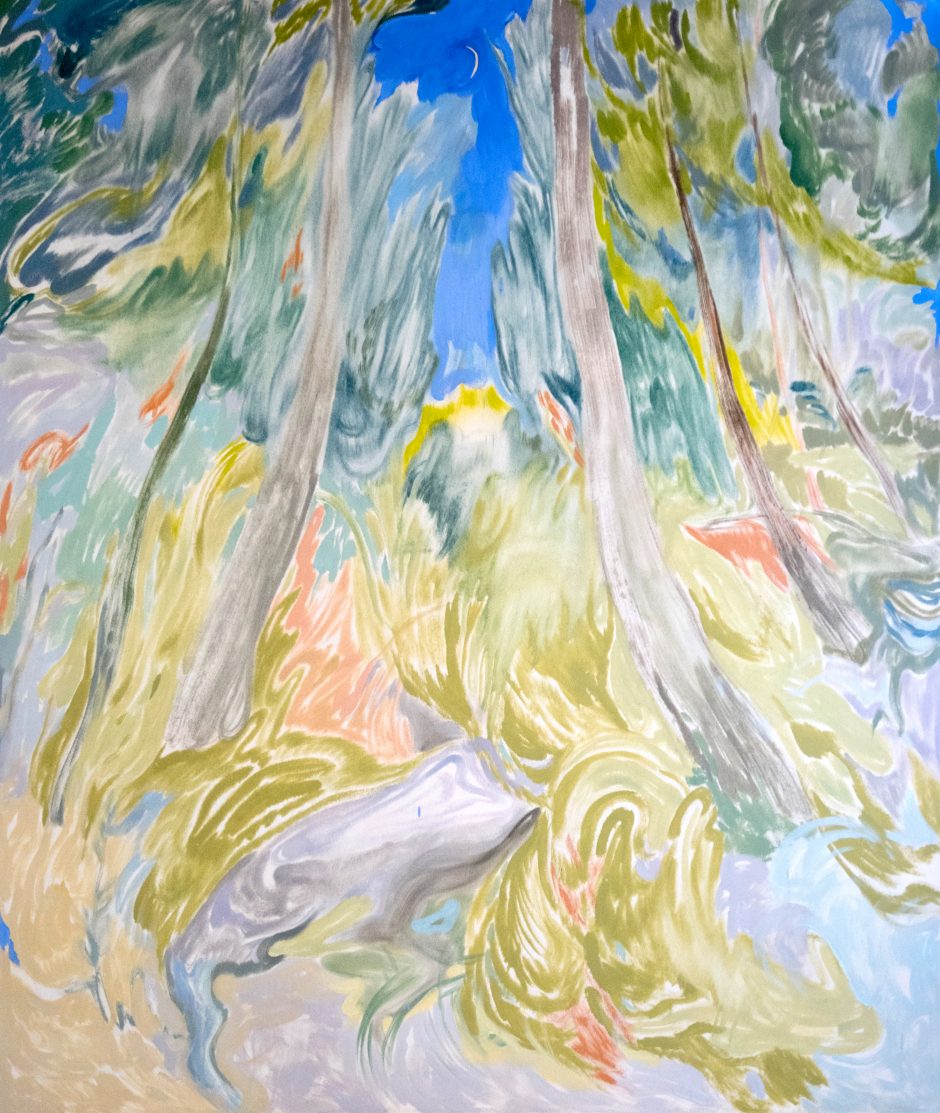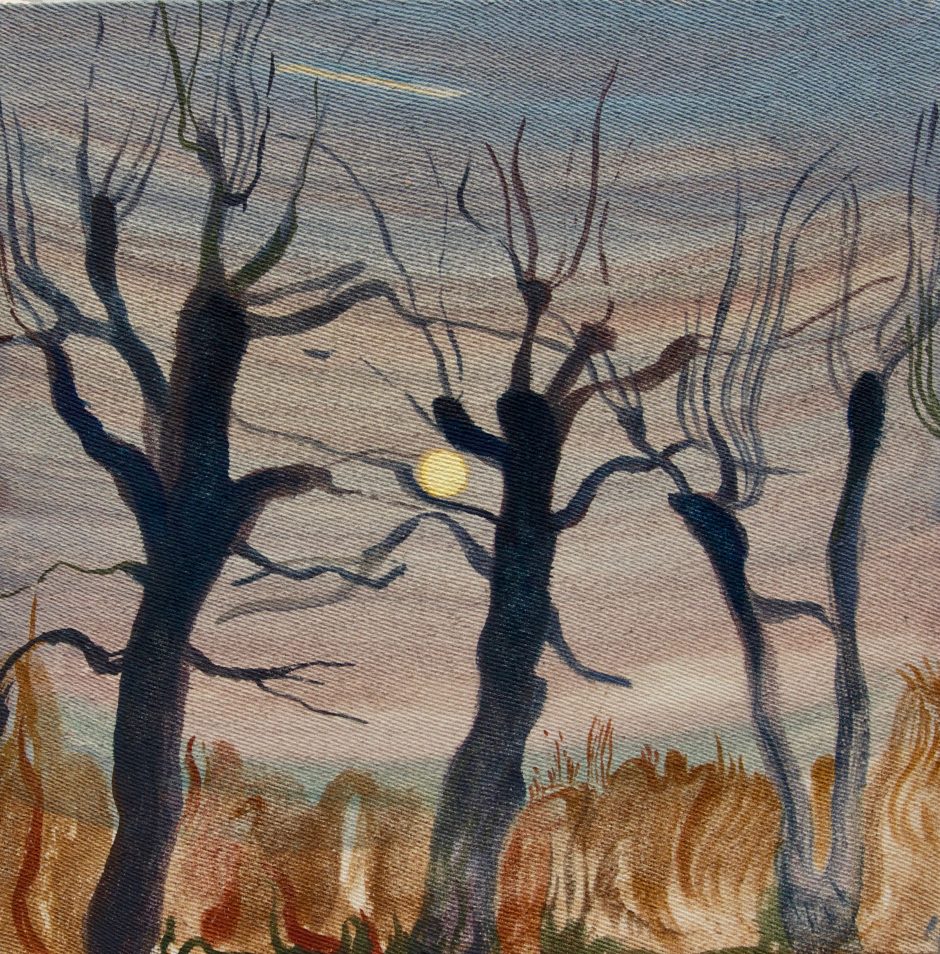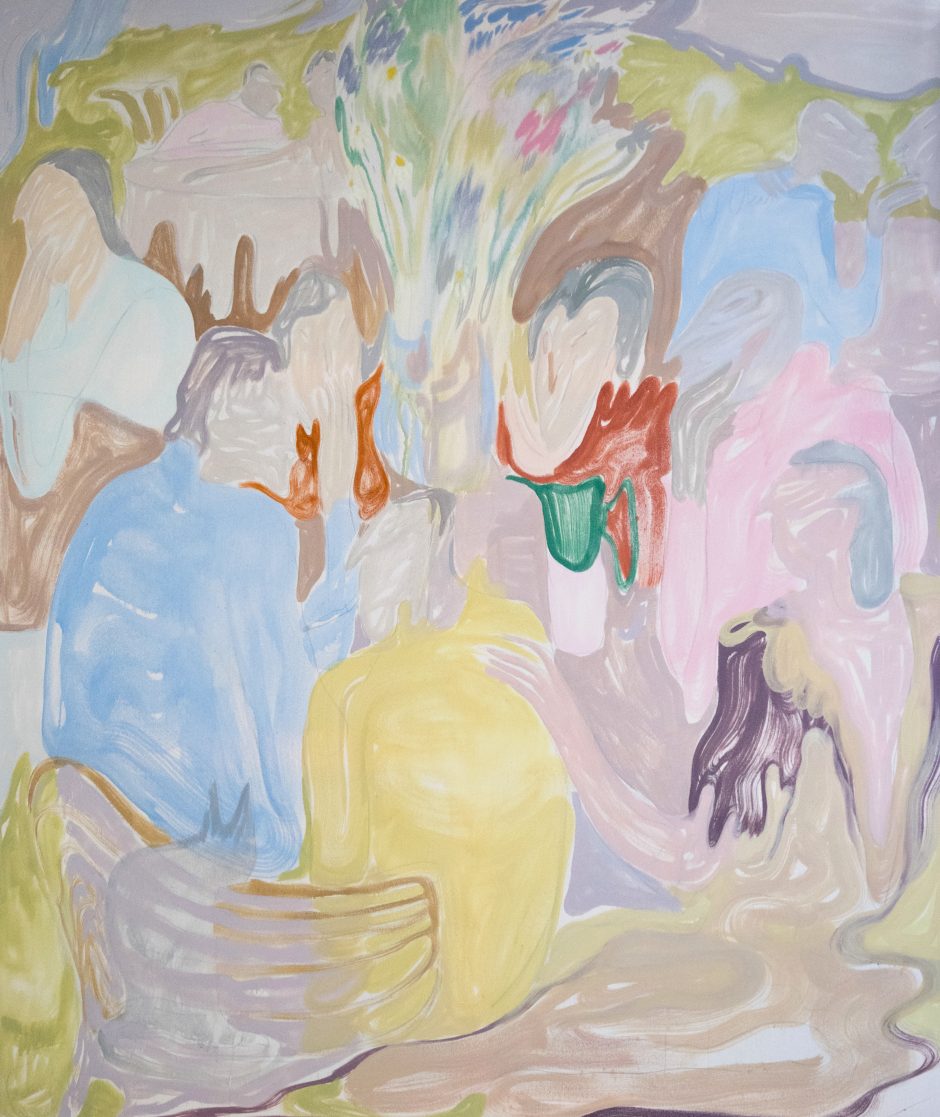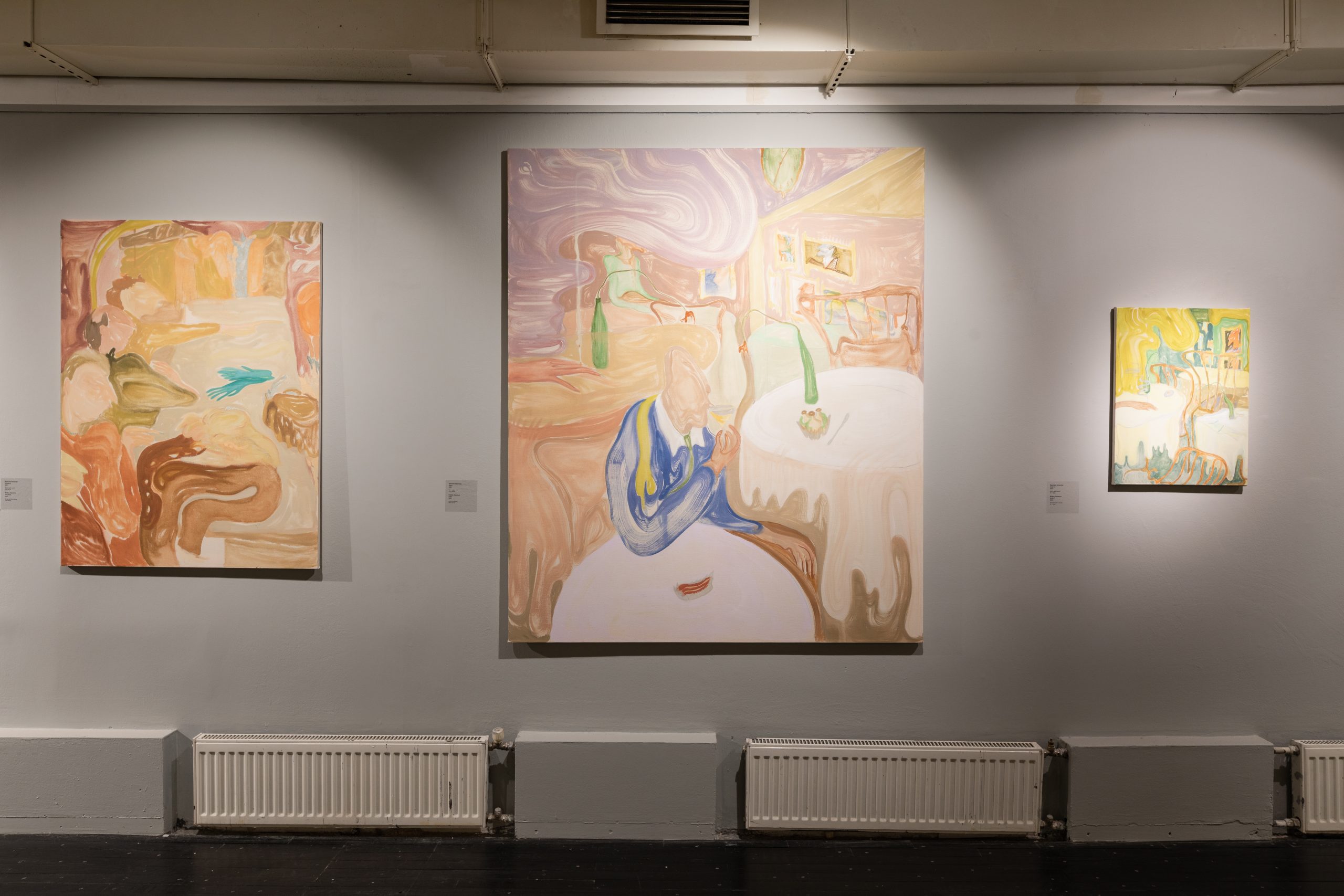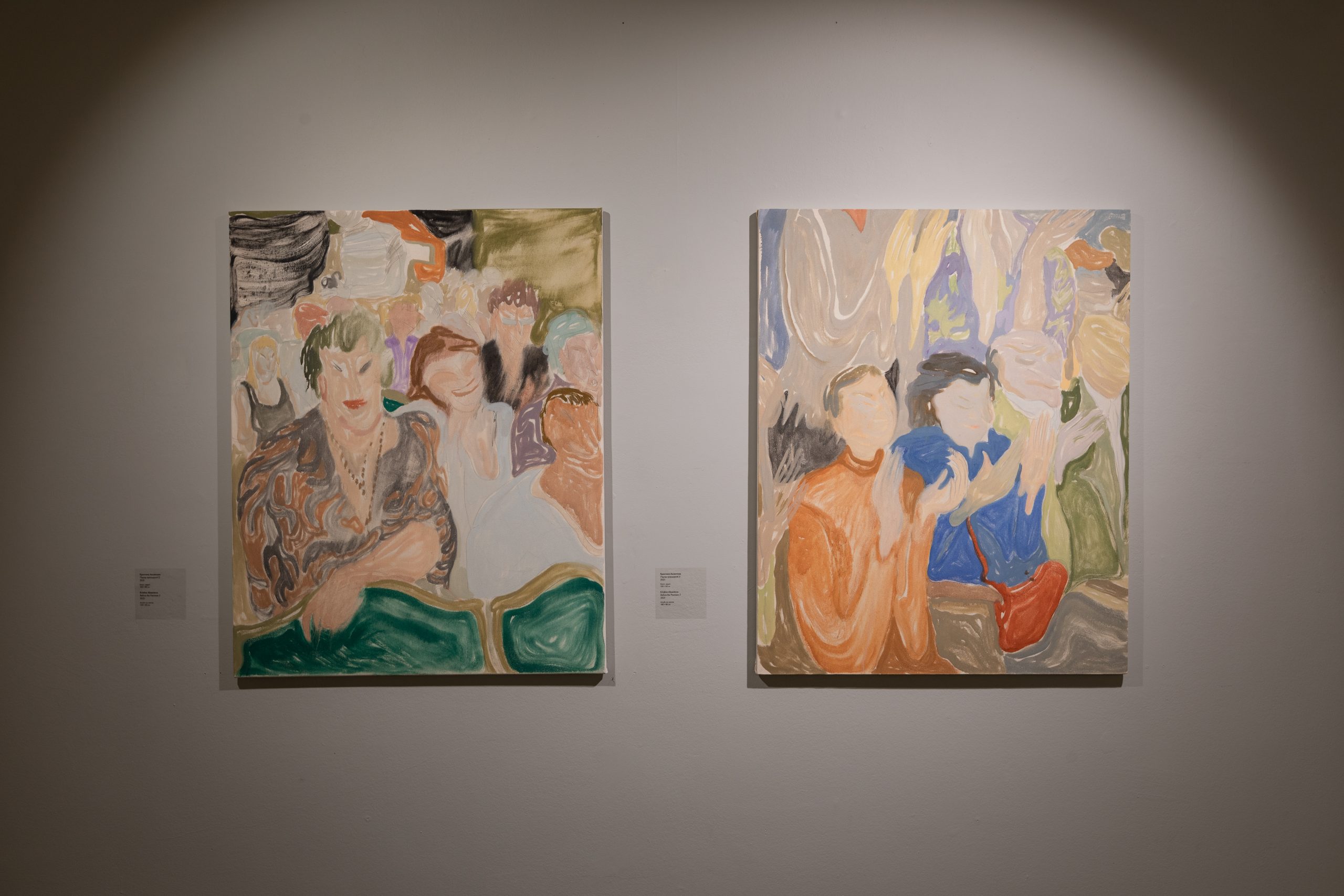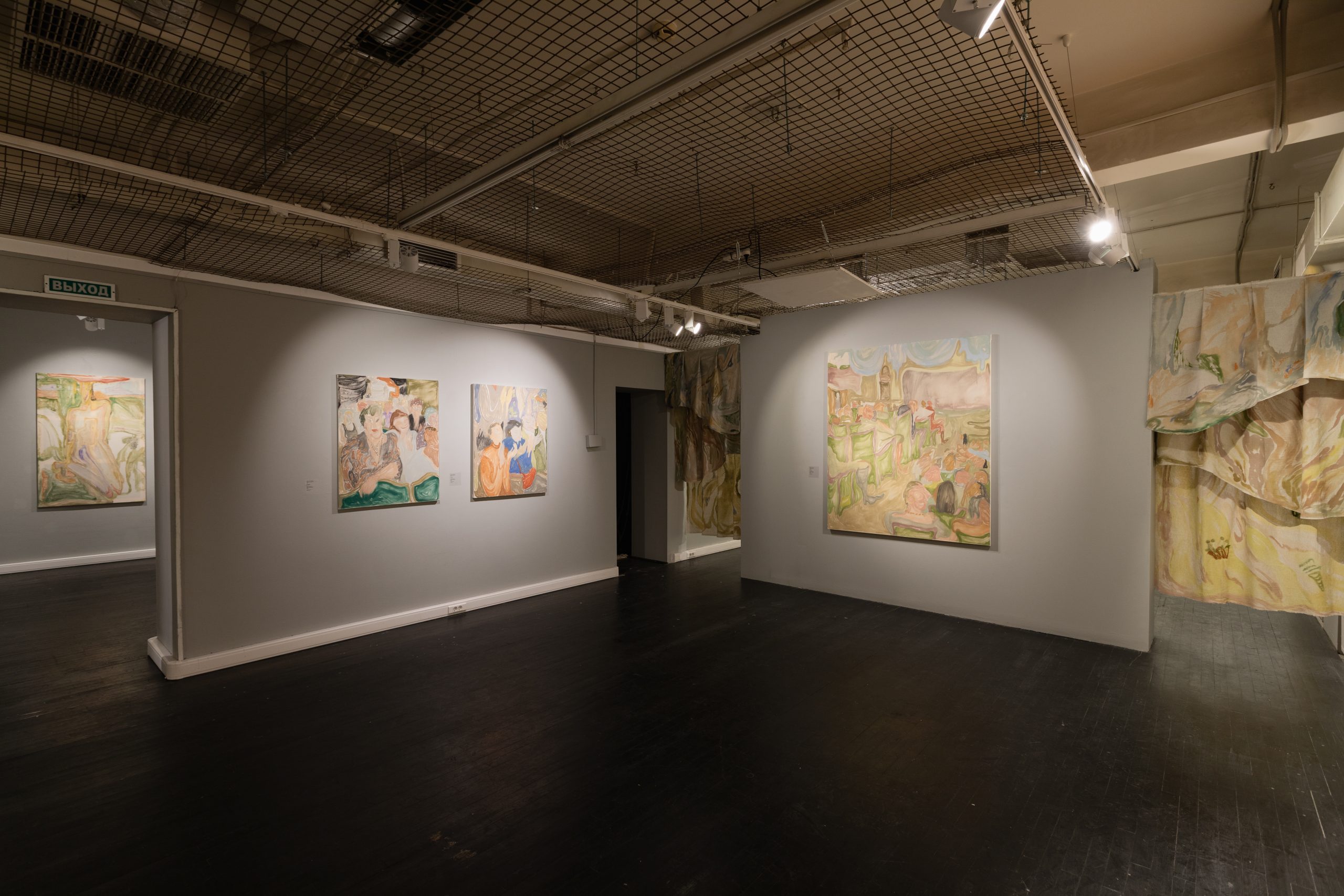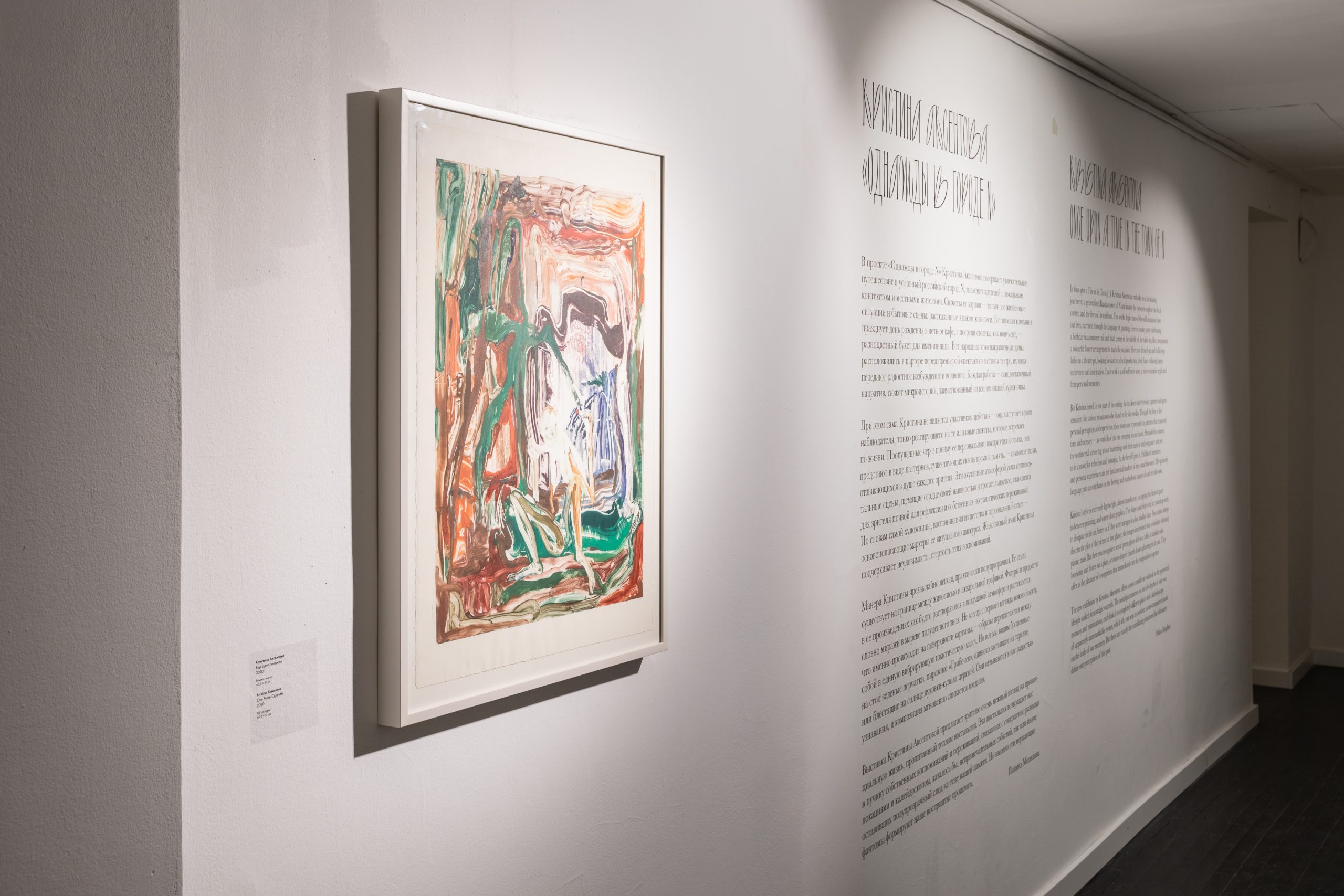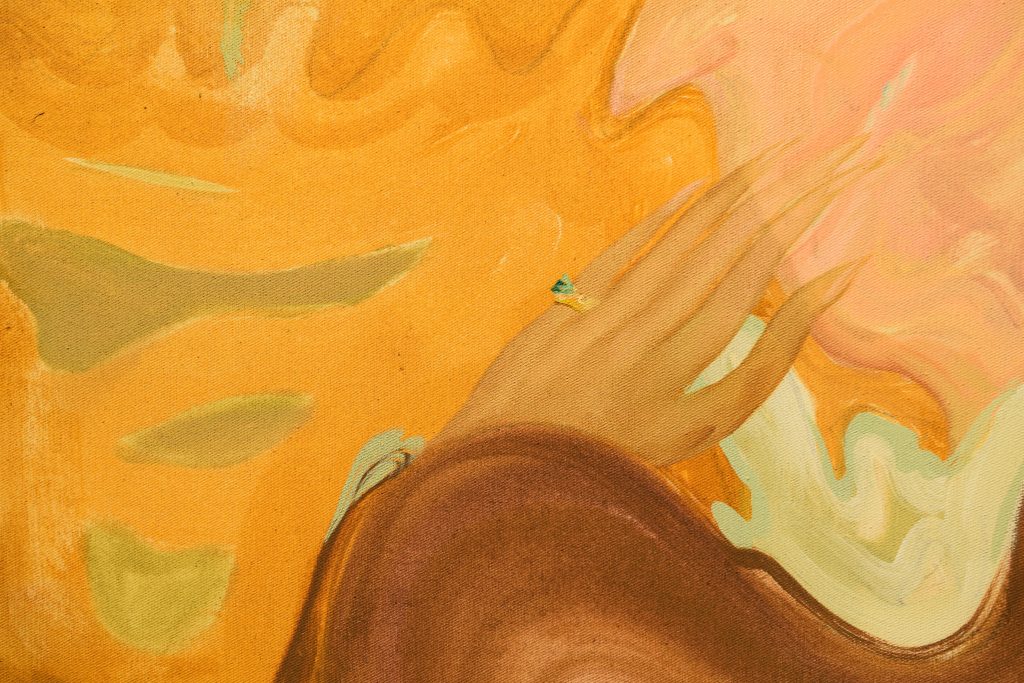
In Once upon a Time in the Town of N, Kristina Aksentova embarks on a fascinating journey to a generalised Russian town of N and invites the viewer to explore the local context and the lives of its residents. The works depict run-of-the-mill situations from our lives, narrated through the language of painting. Here is a noisy party celebrating a birthday in a summer café and dead centre in the middle of the table sits, like a monument, a colourful flower arrangement to mark the occasion. Here are dressed-up and dollied-up ladies in a theatre pit, looking forward to a local production, their faces radiating happy excitement and anticipation. Here is a marketplace teeming with shoppers, out to get some fresh underwear or carrots. Each work is a self-sufficient story, a micro-narrative replicated from personal memories.
But Kristina herself is not part of the setting, she is a keen observer who captures with great sensitivity the various situations to be found in the day-to-day. Through the lens of her personal perception and experience, these stories are represented as patterns that transcend time and memory — as symbols of the era emerging in our hearts. Shrouded in cosiness, the sentimental scenes tug at our heartstrings with their naïveté and poignance and put us in a mood for reflection and nostalgia. The main domain where Kristina Aksentova operates is memory. As she herself puts it, ‘childhood memories and personal experiences are the fundamental markers of my visual discourse’. Her painterly language puts an emphasis on the fleeting and washed-out nature of such recollections. They evade us like a morning dream and dissolve in the chambers of our mind.
Kristina’s painting style is extremely lightweight, almost translucent, occupying the liminal space in-between painting, and watercolour graphics. Her works are often marked by a sketch-like incompleteness. The shapes and objects in her paintings seem to dissipate in the air, blurry as if they were mirages in a hot midday haze. You cannot always discern the plot of the picture at first glance, the images intertwined into a wholistic vibrating plastic mass. But then you recognise a set of green gloves left on a table, a familiar cake, lonesome and frozen on a plate, or onion-shaped church domes glittering in the sun. They offer us the pleasure of recognition that immediately ties the composition together.
The new exhibition by Kristina Aksentova offers a most considerate outlook on the provincial lifestyle soaked in nostalgic warmth. The nostalgia immerses us into the depths of our own memory and ruminations, each linked to completely different places and a kaleidoscope of apparently unremarkable events, which left, one way or another, a semi-transparent mark on the body of our memory. But these are exactly the scintillating phantoms that ultimately define our perception of the past. Perusing the archive of the artist’s personal memories, carefully collected at the exhibition, each of us will come across a dried violet inserted between the pages of our favourite book.
Polina Mogilina (curator)


